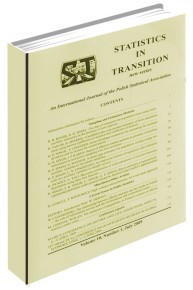A Comparison of Small Area Estimation Methods for Poverty Mapping
A Comparison of Small Area Estimation Methods for Poverty Mapping
Author(s): María Guadarrama, Isabel Molina, J. N. K. RaoSubject(s): Economy
Published by: Główny Urząd Statystyczny
Keywords: area level model; non-linear parameters; empirical best estimator; hierarchical Bayes; poverty mapping; unit level models
Summary/Abstract: We review main small area estimation methods for the estimation of general nonlinear parameters focusing on FGT family of poverty indicators introduced by Foster, Greer and Thorbecke (1984). In particular, we consider direct estimation, the Fay-Herriot area level model (Fay and Herriot, 1979), the method of Elbers, Lanjouw and Lanjouw (2003) used by the World Bank, the empirical Best/Bayes (EB) method of Molina and Rao (2010) and its extension, the Census EB, and finally the hierarchical Bayes proposal of Molina, Nandram and Rao (2014). We put ourselves in the point of view of a practitioner and discuss, as objectively as possible, the benefits and drawbacks of each method, illustrating some of them through simulation studies
Journal: Statistics in Transition. New Series
- Issue Year: 17/2016
- Issue No: 1
- Page Range: 41-66
- Page Count: 26
- Language: English

